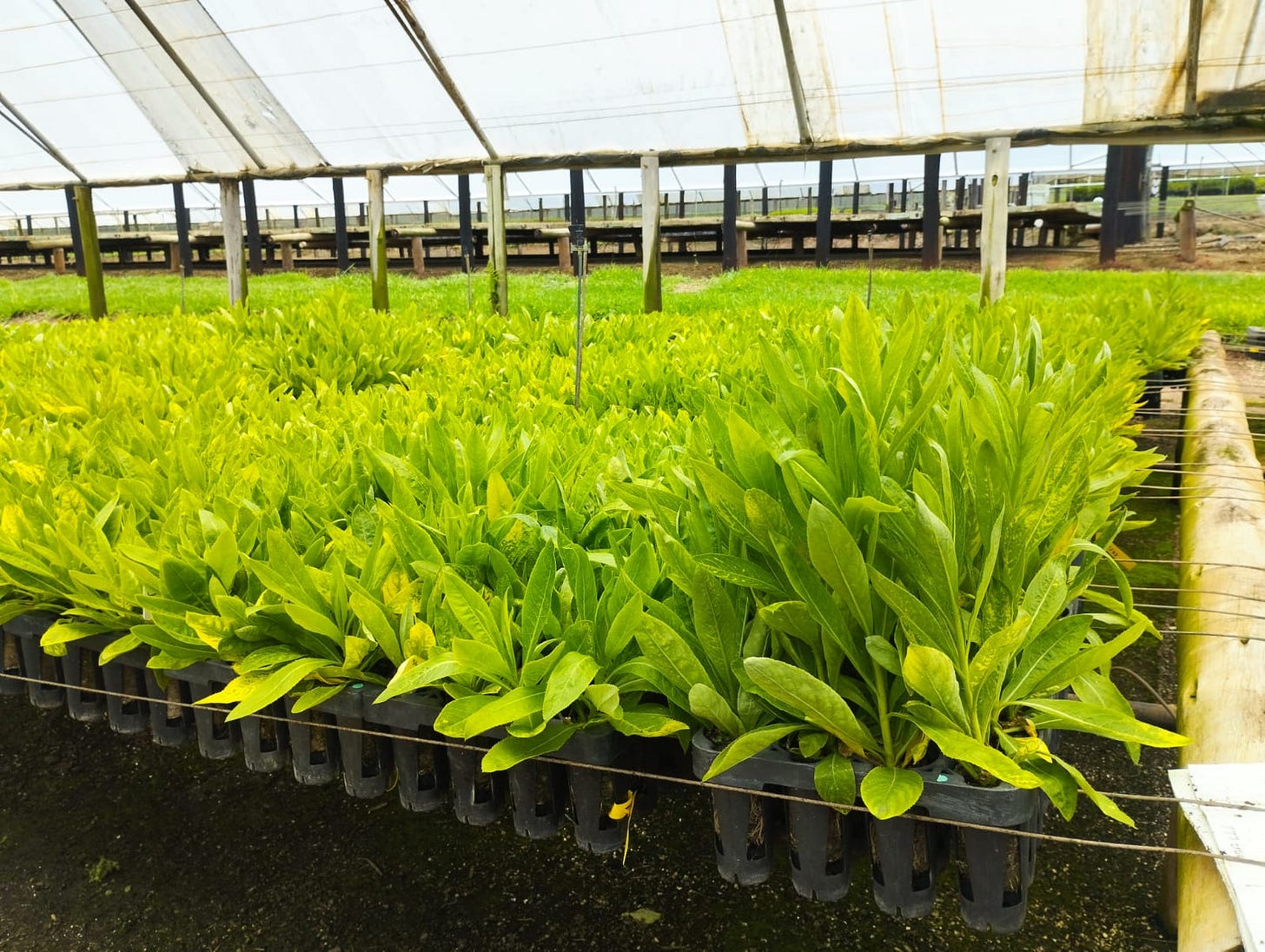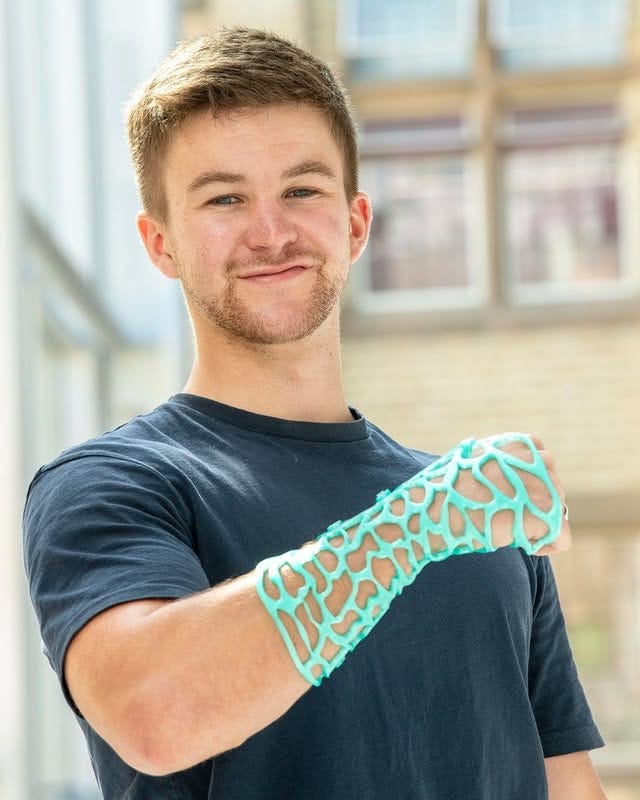They're mining with daisies instead of drills [167]
Plus a student re-inventing casts, my parents upgrading their home, and 7 other stories of progress...

I spend hours searching for stories of progress to report almost every day, combing through dozens of publications, newsletters, journalists, and messages. Every so often, I come across something that’s so cool and energizing to me, that I immediately know I have to report it.
This week, I was struck by a company mining with daisies instead of drills, and I dove in head-first. More on that in a moment!
But before we learn more, it’s been New York Climate Week, a nonstop whirlwind of events and action. I’ve spoken on stage four times, met what felt like a thousand awesome new people, and came across some really cool stories that I can’t wait to report for you. In tumultuous times, people are what always seems to be giving me hope the most.
The Hopemakers tells little-known stories of everyday heroes building a better future. Please consider upgrading your subscription to support this work, share with someone you love to brighten their day, and leave a comment with your thoughts after you read this edition!
Mining is out, planting is in
Plants are sucking up metals from the soil to replace mining.
Four years ago, a doctor in Plant Biotechnology and Genetics named Rashid and an entrepreneur named Fabien, came together to figure out how to make mining cheaper, faster, and less destructive.
They enhanced a type of daisy which is a “hyperaccumulator” that naturally pulls up metals from the soil through its roots and stores them in its leaves and stems.
Planting the daisies on metal rich soils where most other plants struggle to grow, they then harvested, dried, and extracted the nickel oxide in a process called “phytomining”, to be used in items like batteries or stainless steel appliances.
Instead of the decades of scouting, construction, and exploding that’s usually required to mine nickel, their process is cheaper, smaller, cleaner, and up and running in 1-2 years.
And their hard work has earned their company Genomines $45 million in funding to scale this process up and transform how the world gets metals.
So do you think this is the future of mining?
This student invented a new & improved cast
You don’t know this Jake Inglis, but you should, cause he invented a new kind of medical cast that could finally replace that outdated design we all know.
Jake fractured his back playing hockey at 17 and was going through six frustrating months of intensive recovery when he realized how uncomfortable, unhygienic, and difficult current fiberglass casts are.
So he designed a customizable 3D printed cast made of a nylon polymer that’s lightweight and water resistant, lets x-rays through, and has a ventilated design that’s removable for washing.
The cast, which he called Morphopaedics, is heated and shaped directly onto a patient’s arm, and can then be adjusted as swelling from the injury decreases.
And unlike traditional casts, after someone is healed, it can be fully recycled.
Jake’s prototype is now award-winning, has reportedly gotten positive feedback from healthcare professionals, and he’s in the process of improving and trademarking the design.
So is this the future of casts?
My parents joined 3+ million people upgrading their homes
*This was a paid collaboration just for social media with my partner Climate Power. I only collaborate on ideas I truly believe in, and I’m including it here to provide more interesting stories that you may like :)

My parents joined more than 3 million people each year saving billions of dollars by upgrading home energy and getting tax credits, and in their case, installing rooftop solar.
Nearly 50 years ago in 1978, these started by President Jimmy Carter to create more energy independence and reliability, and then in 2005, President George W Bush created a new set of credits to support energy efficient technologies that lower costs.
These evolved over the years until 2022, when President Joe Biden passed the Inflation Reduction Act that expanded and extended these through 2035, helping people save tens of thousands of dollars by improving insulation, upgrading heating and cooling systems, getting rooftop solar, EVs, batteries, and much more.
The great incentives spanning decades have been a win-win, saving families money while improving energy efficiency for the country, but the current administration is ending the federal ones by the end of the year.
It’d be much better for everyone if they stayed, and some states will still have incentives, but before the rest are gone, my parents and many others aren’t giving up but are taking advantage while we still can, overcoming these barriers to add more modern and clean energy sources into the mix.
Things often move slowly, so look into expiration dates, calculate if you can save, and let’s maximize the next few months.
A few more things going right in the world

🌾 The world passed a big rewilding milestone where the amount of land used for agriculture has peaked, with experts believing more land will continue to revert to its natural ecosystem thanks to more efficient farming and less red meat consumption, really meaning there’s no need to keep deforesting so let’s finally stop that (Joseph Poore, Hannah Ritchie and Charles Godfray|BBC)
📚 Every child in the world would have access to free public education in a global treaty that’s gaining momentum to make early childhood learning accessible to all through secondary school, with 58 countries supporting the initiative so far (Nevena Saykova|Human Rights Watch)
🚌 Bus stops are getting green roofs covered in plants across the UK, Europe, and now the US, with dozens in Boston and more coming to Maryland, Virginia, and New York, to help cool down cities while boosting pollinator biodiversity, absorbing water, and being nice to look at (Kamrin Baker|GoodGoodGood)
Community wins
🚗 renitaneko is carpooling with their partner to save money and pollution and is hopefully moving to cut down their commute.
How about you?👇
More fun stories worth reading
🧑🧑🧒🧒 Grist’s 10th edition of the 50 people making a positive impact in the world.
🍻 Chimps eat the equivalent to several beers in alcoholic fruit every day in the wild, which might hint at why humans like to drink.
🍝 Scientists made the perfect cacio e pepe and won a Ig Nobel Prize for it (seriously).
Written by Jacob Simon. Over 1 million people are in our community across Instagram, TikTok, and YouTube. You can say hi on LinkedIn, or by emailing jacob@jacobsimonsays.com. Main illustration by Andrea Miralles.
Thanks for helping spread some positivity, and see you next week for more!





Pure genius!
This is fantastic! Thank you!